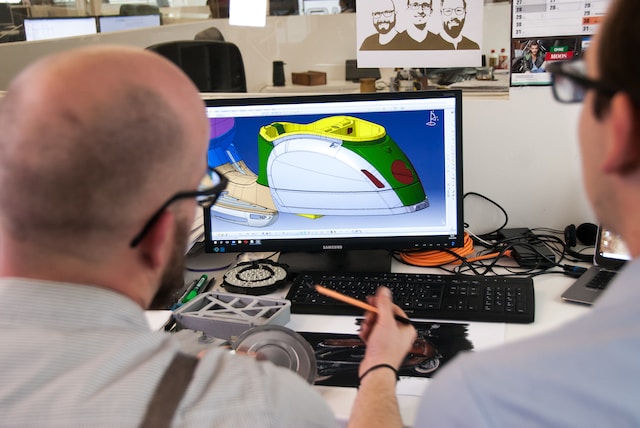Injection molding uses high pressure to form a plastic part. This process can produce parts of various sizes and shapes that are difficult or impossible to produce with other methods. A straight parting line makes it easier to eject the molded piece from the mold. A draft angle should be added to vertical walls to avoid causing drag marks on the finished product.
Design for Manufacture
Injection mold manufacturing involves feeding hard plastic granules into the barrel of an injection machine. A screw moves forward and simultaneously heats the granules, mixes them, and helps build up pressure to melt them. Once the melted plastic passes through the sprue and the mold cavity, it re-solidifies into the precise shape of the part. The resulting part has two sides — the A side, which contains the core, runner system, and ejector pins, and the B side, which contains hidden features like bosses and ribs. The injection mold must account for these features in its design, and this is where the principles of DFM come into play. The DFM process helps engineers and inventors design their prototypes in a way that supports injection molding.
Material Selection
One of the most crucial factors in injection molding is the selection of the correct materials. You must ensure that the material’s performance satisfies the product’s functional requirements, is feasible with the injection process, and is cost-effective. Wall thickness is another factor, as fragile walls require high plastic pressure and can cause air traps. Likewise, thick sections require more time for cooling and ejection. Injection molded parts should have uniform wall thicknesses to minimize costs and improve product performance. Parting lines, draft angles, and ribs are also essential features. Ideally, the parting line should be straight and simple to avoid flash defects. Parts with undercuts are more complicated to mold and can be costly. Using sliding side-action cores can be an option when it is not possible to redesign the part to eliminate undercuts.
Mold Design
Plastic injection molding is a versatile technology that can produce parts for many uses. Injection molding is also a cost-effective manufacturing process. However, some common production problems can arise during the injection molding process. For example, knit lines (minor hair-like discolorations) can occur when two molten plastic flows meet, creating trapped air. This is more pronounced on part features with abrupt geometry changes or holes. Adding a chamfer to sloped edges or corners can help reduce the possibility of knit lines. Multi-cavity molds must be designed so that each cavity cools consistently. Otherwise, part dimensions may differ. A skilled designer can minimize the impact of this issue by positioning aesthetic detriments like bosses, ribs, snap-fits, and embossed text away from areas that will be cut off during assembly/disassembly (the ‘B’ side). Sliding side-action cores are also used to avoid undercuts, but these add complexity and cost.
Tooling Costs
The main components of an injection mold are the sliding pillars, ejector pins, sprue bushing, and locating rings. Other accessories include sprue gates (edge, sub, and hot), cooling lines, and springs. To reduce tooling costs, the design of the plastic part should aim to minimize wall thicknesses. Fragile walls require high plastic pressure and may trap air, while excessively thick walls result in longer cycles and more significant material usage. Using chamfers on sloped edges and fillets on cornered surfaces can also help to minimize the need for an overly thick wall. These small changes can significantly reduce production costs. Fortunately, the tooling cost is only an initial one-time investment and can be amortized over multiple parts. This contrasts the higher production and material costs incurred with other molding processes.
Quality Control
One of the most critical aspects of injection molding is ensuring that the proper plastic parameters are achieved for each shot. This requires careful mold and machine settings documentation, such as volumes, pressures, and temperatures. Non-consistent wall thicknesses can cause warping as the molded parts are excellent and shrink. Using a uniform wall thickness throughout the part can minimize this problem. Rounded corners and edges make the melted plastic flow easier, helping reduce residual stress and cracking. These features also make ejecting the finished part from the mold easier. A common feature of injection molded parts is bosses, cylindrical projections designed to accept screw or threaded inserts. These can be modeled directly on the part or added as inserts that slide into the mold.

